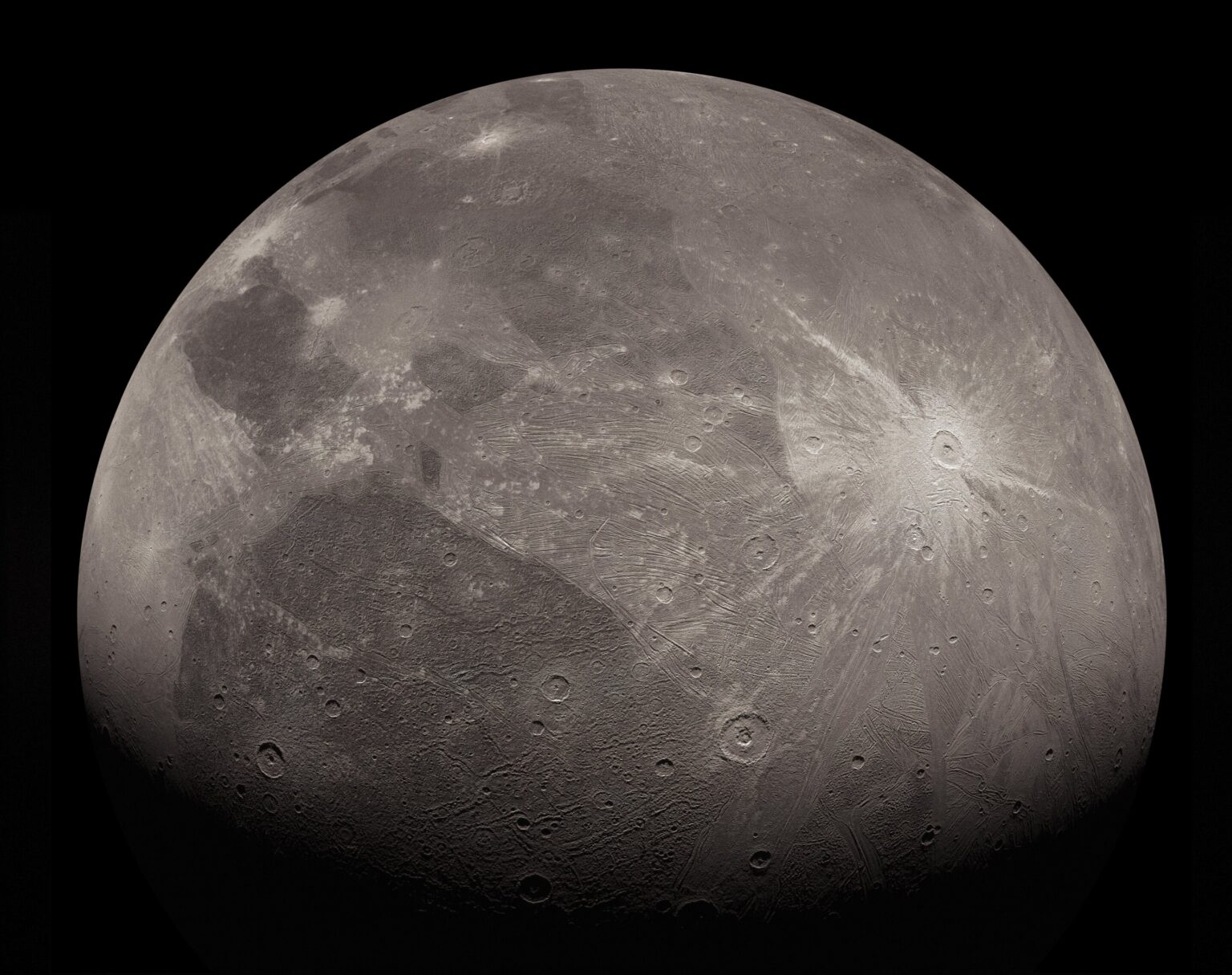Data from the Juno spacecraft suggested to scientists that there might be a lot of salts and organic substances on the surface of Jupiter’s moon Ganymede. According to scientists, they are in large numbers in the ocean, hiding under the icy surface of the moon.

Salts on the surface of Ganymede
Scientists working with the Juno spacecraft reported an interesting discovery made on the surface of Jupiter’s largest moon Ganymede. This celestial body is larger than Mercury in size, and under its icy crust there is an ocean up to several tens of kilometers deep.
Previous spectroscopic studies conducted by the Galileo spacecraft and the Hubble telescope have already shown that it can contain a large amount of organic substances and salts. And scientists suspected that these substances eventually came to the surface due to cracks.
Confirmation of this was found in the data of the Juno spacecraft, which on June 7, 2021, flew over Ganymede at a distance of only 1046 km from its surface. At that moment, it used the Jovian InfraRed Auroral Mapper (JIRAM) tool to study objects on its surface.
JIRAM was constructed by the Italian Space Agency. In fact, it is an infrared spectrometer. It usually scans Jupiter’s atmosphere to a depth of 50 to 70 km. In the case of Ganymede, it could determine the composition of the surface of the moon with a resolution of up to 1 km.
What kind of substances did Juno find
The infrared spectrograph could identify various salts and organic compounds on the surface of Ganymede: sodium chloride, better known as table salt, ammonium chloride, sodium bicarbonate and possibly aliphatic aldehydes.
All these substances do not indicate directly, either for the fact that life may be hiding somewhere in the depths, or against it. However, their presence suggests that the conditions under the Ganymede ice should be quite favorable for this.
Interestingly, Jupiter’s magnetosphere, which covers all three of its large moons, generates a stream of high-energy particles that should destroy all these substances. However, studies conducted earlier have shown that Ganymede has a magnetic field powerful enough for at least its equatorial regions up to latitude 40 to be protected from such influence.
During the flyby in June 2021, JIRAM covered a narrow range of latitudes (from 10 to 30 degrees north) and a wider range of longitudes (from -35 to 40) in the hemisphere facing Jupiter. So it found the substances exactly where it was supposed to find them.
It is quite possible that something similar will be found on another moon of Jupiter — Europa. Juno made its flight last year. As for Ganymede, the spacecraft will visit it next time on December 30 of this year. Then it will pass over the moon at a distance of only 1500 km.
According to phys.org
Follow us on Twitter to get the most interesting space news in time
https://twitter.com/ust_magazine
